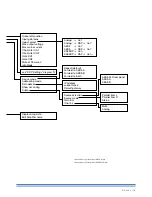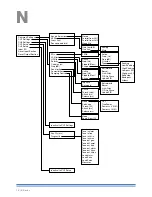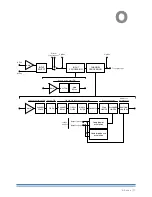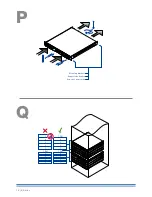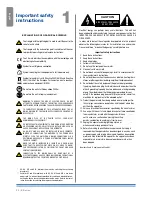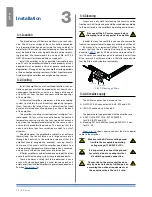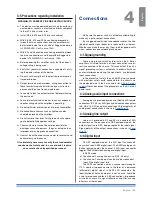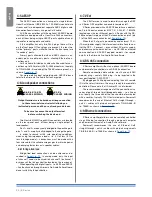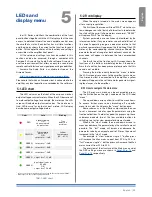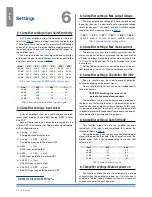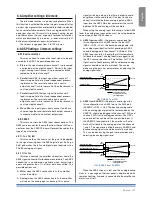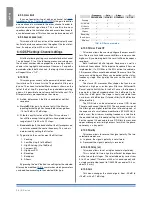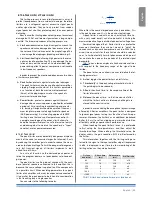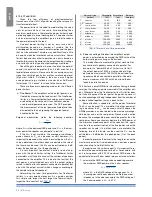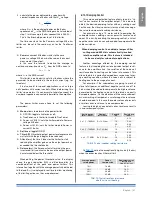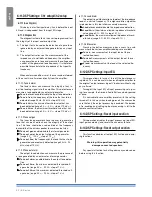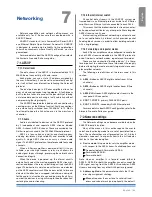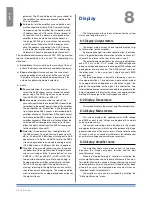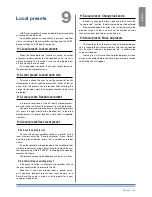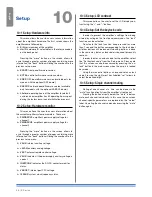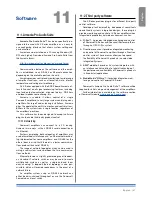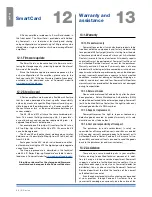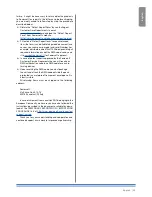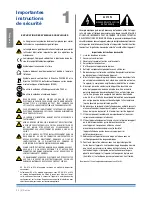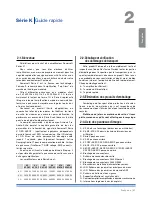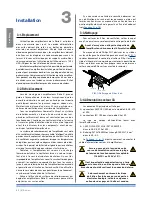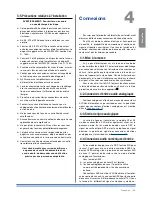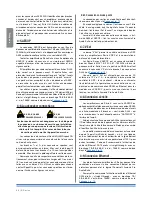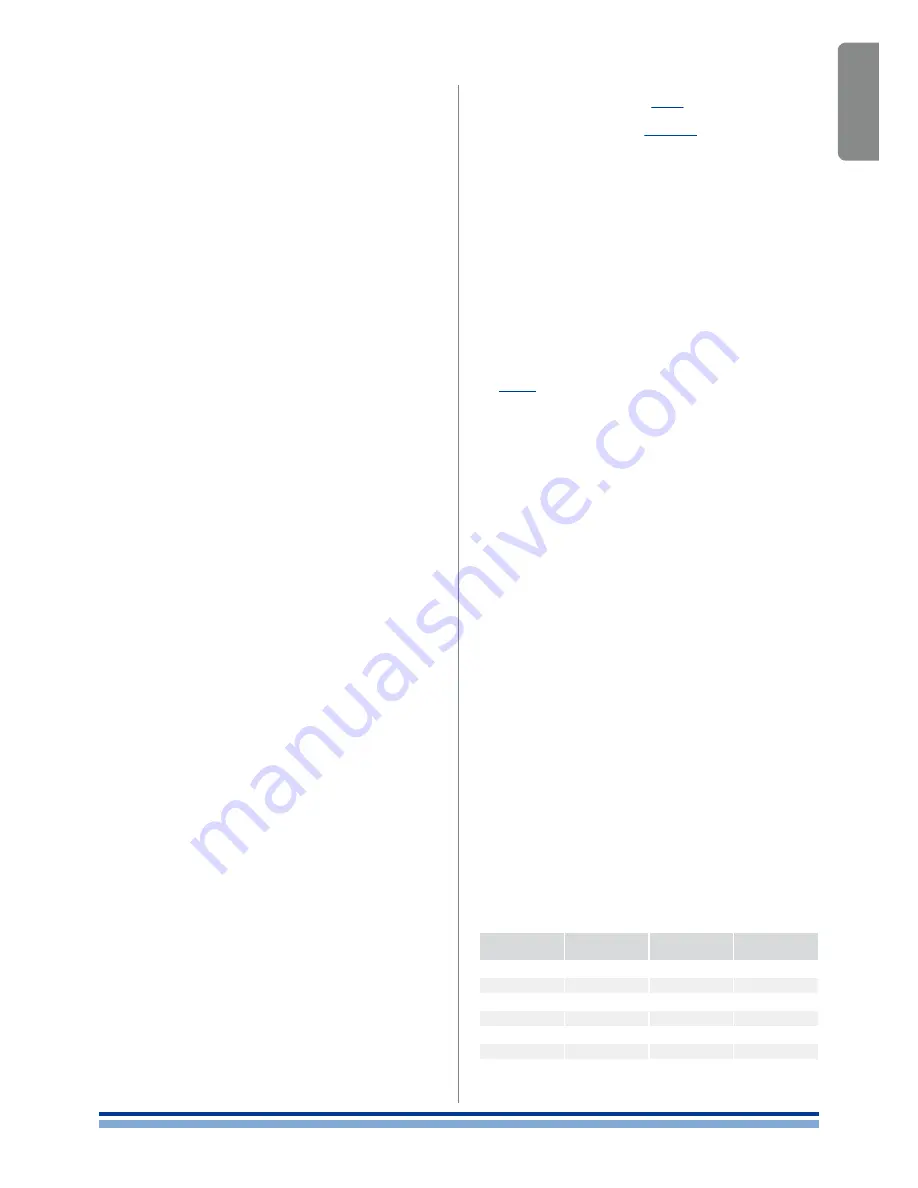
En
gl
ish
6 : 10.6. Peak Limiter et Power Limiter
The limiting process in sound reinforcement is a way to
protect loudspeakers from accidental damage; therefore,
limiters are a safeguard against excessive signal peaks
and/or signal power. They not only protect from sudden
signal peaks but also they protect against to an over power
delivering.
Bear in mind that limiting does not only prevent occasional
damage, but it first and foremost guarantees a long compo-
nent life. The two main purposes of limiting process are:
f
f
Limit over-excursion
: an impulsive signal can reach the
speakers and cause damage due to over-excursion of
the voice coil that is driven out of the magnetic gap.This
can damage the diaphragm (breaking or deforming it).
f
f
Limit over-heating
: delivering high power to the voice
coil may lead to overheating. This can damage the iso-
lation or burn out the voice coil. another evident high
power driving effect is power compression, noticeable
in low frequency speakers.
in order to prevent the mentioned phenomena two kinds
of limiters are provided:
f
f
Peak limiter
: protects against mechanical damages.
The peak limiter may also be used to control amplifier
clipping. Designers should set this limiter’s parameters
as a function of both the maximum displacement
(Xmax) of the diaphragm as well as the speaker’s
maximum tolerated voltage.
f
f
Power limiter
: protects speakers against thermal
damage when excessive power is applied for extended
periods of time, resulting in overheating and, eventu-
ally, burning. Designers should be aware of the maxi-
mum long term power safely applicable to speakers
(aES power rating). an interesting approach to rMS
limiting is one that uses coil temperature control. a
complete knowledge of the driver’s limits allows to
keep the temperature level in a safe interval not only to
avoid damage but to maintain the speaker in a “linear”
zone that avoids power compression.
6 : 10.6.1. Peak Limiter
The peak limiter avoids potentially dangerous displace-
ments of the cone (an excursion larger that allowed). it acts
by reducing the amplifier gain in order to reduce the meas-
ured output peak voltage. To limit the dangers of dangerous
very fast transient signals, all limiters implement a look
ahead time of 0.5 ms.
as a rule of thumb, use the declared peak power or
twice the program power as a loudspeaker safe-zone out-
put power.
The peak limiter’s setting do not change with the num-
ber of parallel speakers connected to the amplifier, this is
because the same voltage is applied to all the components
in a parallel circuit. When deciding parameters for a peak
limiter of an amplifier with many loudspeakers connected to
it in parallel, the peak power to be taken into consideration
is that reaching only a single speaker.
You can refer to the following formulas:
Where
Re
is the nominal impedance of only one driver,
P
peak
is the peak power and
V
peak
is the peak output voltage.
a peak limiter, used with a very short attack time (i.e.,
with a very rapid onset), can also be useful in limiting the
maximum peak voltage in distributed constant voltage lines.
powersoft designed the k Series limiters as protective
measures; therefore, they are not meant to “color” the
sounds such as dynamic compressors can do. With this in
mind, time constants for these limiters should be selected
so as to limit potentially harmful phenomena which persist
for no more than one or two periods of the related signal
bandwidth.
TaB. 7
gives a few examples of attack and release times
with respect to the frequency range of the signal to be
limited.
The peak limiter menu allows the user to define the fol-
lowing parameters:
f
f
Active
: toggles the power limiter’s on/off status;
f
f
Threshold (V
pk
)
: the peak voltage threshold at which
the gain begins to be reduced;
f
f
Attack
: the attack time, i.e. the response time of the
limiter intervention;
f
f
Release
: the decay time, i.e. the time constant after
which the limiter’s action is released and the gain re-
stored to the nominal value.
in order to avoid choking the exceptional dynamic range
offered by k Series amplifiers, the peak limiter is designed
to ignore signal peaks lasting less than the attack time pa-
rameter. Moreover, the limiter has an additional lookahead
buffer (0.5 ms) to soften clipping and minimize distortion,
effectively yielding superior sonic performance.
When tweaking the peak limiter’s levels, it is preferable
to first setup the time parameters, and then adjust the
threshold voltage. When editing the threshold value, the
display shows the gain reduction (Gr) in dB enforced by
the limiter.
This information, together with the limiting voltage re-
ferred to the signal in the input amplifier stage (i) expressed
in dBu, is displayed in real time to allow monitoring of the
limiting actions as they are performed.
Octave
band (Hz)
Attack time
(ms)
Release time
(ms)
Atk/Rel ratio
63
45
720
x16
125
16
256
x16
250
8
128
x8
500
4
32
x8
1000
2
8
x4
> 1000
1
2
x2
TAB. 7: Attack and release times per octave bands.
P
peak
=
Re
V
2
peak
V
peak
= √
Re
∙
P
peak
English | 29
Summary of Contents for K2 DSP+AESOP, K3 DSP+AESOP
Page 4: ...Page intentionally left blank 2 K Series...
Page 8: ...A K2 K3 K2 DSP AESOP K3 DSP AESOP 465 32 2 496 456 5 9 482 439 44 32 6 K Series...
Page 88: ...Page intentionally left blank 86 K Series...
Page 89: ...Page intentionally left blank Specifications 87...
Page 90: ...Page intentionally left blank 88 K Series...
Page 91: ......

